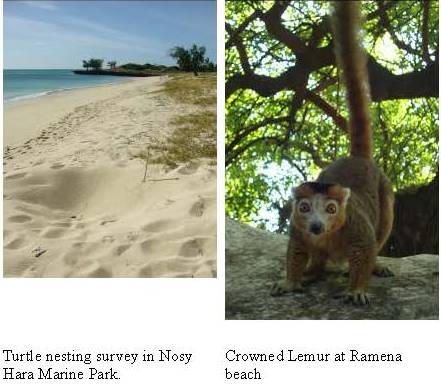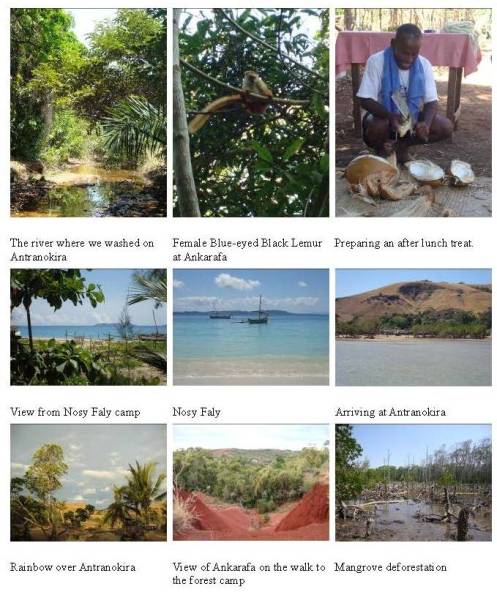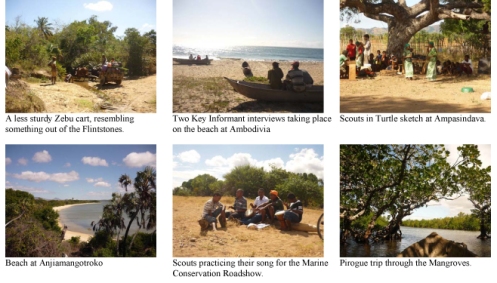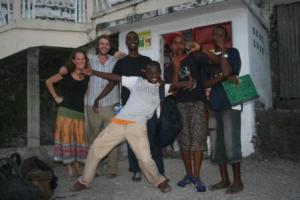http://www.facebook.com/backpackingchica
Climbing out of my tent into the fresh cool of a summer morning inMadagascar, I couldn’t believe I was actually working as a field assistant in a rural African village. Three weeks of on-the-ground conservation, living cut off from civilization, and truly making a difference; it was as if my biologist fantasy had lifted right off the cover of National Geographic and turned into reality.
Six weeks earlier, I’d landed fresh-faced inMadagascar, ready to take on three months of internship work with C3. I’d been referred to the position by a past intern, but aside from superficial notions, I had a very limited idea of what to expect. True, I’d worked elsewhere inAfrica, but that in no way prepares someone for how life-changing the C3 experience can be.
As a general intern, I was free of academic obligation, and worked closely with the local Program Officers to create a project that was both beneficial for myself and for the program. C3 was extremely flexible with what kind of work I was able to take charge of; they care about the future careers of their interns, and if you are willing to take full advantage of the opportunities presented to you, it will be a win-win arrangement!
As a C3 intern, I worked together with the Program Officers to start an in-country outreach conservation program to local schools. Not only did I work closely with local teachers, but I became learned in the local culture, and was even able to become familiar with some of the school students. I loved walking through the urban high school and hearing cheeky teenagers calling out to me in Malagasy, “Mbola tsara Kim!” In fact, the experience affected me so much, I started a small non-profit specifically to help the communities I had worked with.
In addition, I worked together with other interns to write and start a traveling conservation-themed play with a local boyscout group. It was fantastic to help spread understanding about the need to conserve and protect the Malagasy environment. Better yet, the locals loved our play, and traveling from village to village is an experience I’ll never forget!

Many of people have asked me, rather frankly, whether the experience was worth it. I can answer, unequivocally, that the investment of interning with C3 has paid back triple or quadruple in terms of professional and personal advancement. I was able to learn conversational French, and the experience of working with a multi-cultural team and creating outreach programs are unmatched by my peers who opted for more traditional internships. After returning to theUnited States, I was granted a prestigious fellowship and according to the granting organization, it was in large part because of my experience with C3. Even better, I was able to secure PhD placement which will take me back to Diego Suarez, just a few miles from my C3 internship site. As you might guess, having that connection with my future professor (and even knowing some of the same Malagasy locals!), was a great ice breaker during my interviews!
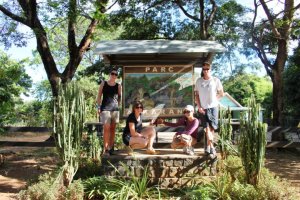
Finally, and all clichés aside, the friends you will make will last you a lifetime. One year after my internship, I’m still in close contact with my C3 coworkers. In fact, one of the girls will be a bridesmaid in my upcoming wedding! Living in Madagascar changes you in ways that are difficult to describe, and surrounded by like minded professionals and friends is a perk unto itself.
I can promise you: if you are looking for something to set you apart, vault you up to a higher level of your career, or simply for a fantastic way to get deeply involved, C3 is the way to go.
http://c3experiences.wordpress.com/

